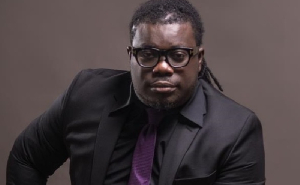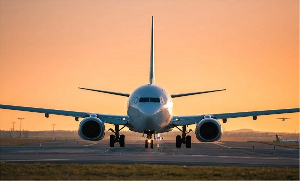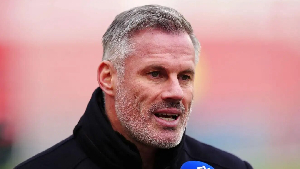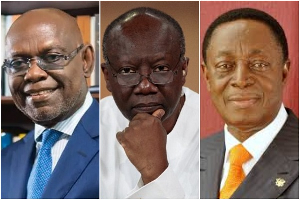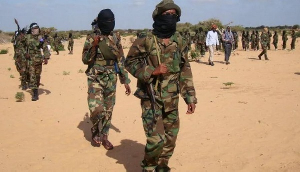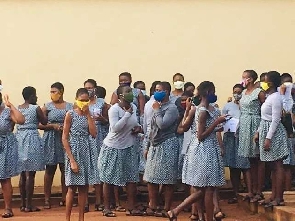Like many countries successive Ghanaian governments have attempted different programmes aimed at marketing the country as the preferred destination in Africa for investments, business and tourism. However, there had never been such a conscious and strategic effort to market Ghana as ‘soap powder,’ to use the age old cliché, like the current administration’s proposed Brand Ghana initiative. These efforts, the current and those before it, border on what is known as country marketing or its sub domain, place branding. In this piece, I will first analyse the first part of the question, ‘Marketing Ghana with what’? The second and third parts, ‘to who and by who’ shall feature in subsequent publications.
Country marketing – or place branding – is the phenomenon where countries consciously see themselves as brands to be marketed through natural or contrived forms of engagement with people, institutions and even with other countries. These engagements could be through advertisement, tourism and exhibitions. Engagement forms could also be the country’s daily interactions with inhabitants in political, social, economic and cultural functions. The increasing awareness of countries as marketable entities has seen the likes of Angola, Kenya, South Africa, Malaysia, Abu Dhabi, South Korea and many other emerging nations flood the screens of international television networks and the internet with their brand propositions. These countries feel they have something distinct and worth telling to attract tourists, investors, companies and international development organisations with the aim of securing socio – economic gains. Just a cursory look at the straplines of these country brands presents to the viewer unique recall propositions (URP) – memorable images and associations – attributable to these brands. These URPs are likely to evoke whenever there is a thought for a holiday, for example, or even to locate a business.
To illustrate this point, let’s consider what images come to mind when you think of Acapulco bay? What of Paris, Brazil, Kenya? What these locations have in common is that they emit certain kinds of images peculiar to them. And if not to them alone, they possess those images in a significant quantity possible to bring them to mind first. Therefore, countries with such unparalleled URPs in their areas of competence, so to speak, are most likely to become destinations of choice. Hence, the flooding on our television screens and the internet many country advertisements in the likes of ‘magical Kenya,’ ‘Angola I believe,’ ‘South Africa, it’s possible,’ ‘Malaysia, truly Asia,’ ‘Georgia hates to be second,’ ‘Singapore, future ready’ and so on.
Of course, not all countries are naturally endowed with the images we associate with them although majority of country brands are built in this way. Whereas some are naturally endowed as a matter of geographic location, for example ‘magical Kenya’ with its unique wildlife safari brand, others have created such status over many years. In this regard, Brazil and Singapore are examples. Some country images of recent years are also work in progress, with Angola in mind in this case. After many years of political unrest Angola is now determined to reinvent itself from the shadows of the past. It buoyant advertisement on international television networks and the recent hosting of the African Cup of Nations seem to showcase to the world that the past is behind it and that Angola is emerging with hope for its citizens and for the future. Hence, the proposition: ‘Angola I believe.’
However these associations and images come about do not matter so much than how they are managed and sold, according to Kotler and Gertner. Although the communications of such country brands may be contrived as in the case of Angola, Kotler and Gertner however caution that claims of values and associations related to countries in brand propositions should be close to reality because they serve as ‘knowledge structures to users.’ They should also be far from stereotypical images to avoid being uncompetitive. Kotler and Gertner also observe that just like commercial brands, country brand propositions have the potential to positively or otherwise contribute to the perceived value of the experience one gains, or expects to gain, from engaging that country. As a consequence, a deceptive proposition will expectedly result in no repeat purchase and bad word of mouth recommendations. The reverse is also true where the experience is exactly ‘what it says on the tin’ or exceeds expectations. In Singapore’s case for example, the country, according to Peebles and Wilson, is indeed ‘future ready’ considering its consistent improvement in the provision of energy, water, telecommunications and port infrastructure aimed at wooing foreign direct investment and expertise. Singapore, they say, is efficiently policed and almost crime-free. Singapore is thus consistent with its ‘future ready’ brand proposition.
With what then is Ghana being branded and marketed? The attempt to brand Ghana has long existed since the 1950’s though implicitly when the country’s first president, Kwame Nkrumah, talked about the birth of the ‘New African’ the night the country gained independence from Britain. In his speech, Nkrumah famously outlined the values of the New African; one that is ‘ready to fight his own battle…’ Nkrumah’s concept of the New African brand was to be actualised through the building of an industrialised nation through science and technology ready for the future socio economic battle that lay ahead of being independent. That is to say, not only was Nkrumah’s idea of brand Ghana carved politically in the concept of ‘now,’ represented by its image as the leading country south of the Sahara in the struggle for independence, but was also socio-economic and futuristic; the manifestation of which were projects such as the giant Akosombo dam unequal in Africa. The proposition of a nuclear energy project and many other infrastructural developments enshrined in the seven year development plan to ensure Ghana’s economic take off were part of the New African brand Nkrumah passionately advanced. Again, in terms of the socio-economic dimension, it is on record that the country possessed a high level of human resources as a result of the education policy that enabled many Ghanaian students go abroad on scholarships to study medicine, engineering and other disciplines necessary to make real the new found identity. Ghana was simply ‘the land of the future’ as it became ‘the industrial Mecca for foreign investments’ in the 1960s, according to one international journalist at the time.
Today, brand Ghana is limited to ‘culture, warmth and much more,’ according to the Ghana Tourist Board (GTB) strategy paper. This is, perhaps, to promote the country’s rich and diverse culture, how friendly the people are and the abundance of sun, to follow the proposition sequentially. The ‘much more’ included in the proposition is however lost in translation as we do not know what they are. Much as culture, warmth and the ‘much more’ are, or could be, important attributes for tourism promotion, they are however the very stereotypes the world has for the entire African continent. They are therefore less competitive, as generic as they are, to be used as the bases for brand Ghana going by Kotler and Gertner’s caution. Brand Ghana, one would think, is more than what the GTB strategy paper seems to suggest: ‘culture, warmth (and the lost in translation) much more.’ The country may lag behind the likes of Kenya in wildlife sophistry or Senegal in cultural exposition but has a competitive advantage in political, human and social capital over most of these emerging African countries having been a democratic success story in the last twenty years. The country’s social-political system – immigration, ports and harbours, the courts, media etc – works better than most of the African countries. It has the most recognised political leaders Africa has ever produced in the likes of its first president, Kwame Nkrumah and the ex-UN boss, Kofi Annan, with South Africa’s Mandela as an exception. Ghana again has, arguably, the most recognised football team, the Black Stars, and player in Africa today, with Asamoah Gyan in mind.
These identified areas where the country arguably possesses a competitive edge are hardly considered in recent efforts to brand the country. It is therefore necessary to review the frameworks being used to guide the country’s branding exercise. That is not to suggest that the approaches previously used by the institutions responsible for marketing Ghana had fail to recognise the frame within which a successful country brand is managed and marketed. The argument, however, is that the framework, such as the GTBs, is confusing.
To identify this confusion is to ask the obvious questions: ‘What is the brand Ghana today? What does Ghana represent in the 21st century? Or better still, ‘what images (or URPs) come to mind when you think of Ghana?’ Pose these sorts of questions to many Ghanaians, or the authorities involved in the various initiatives of marketing the country since 1992 and you will be faced with various images trapped in a myriad of propositions from ‘the Ghanaian hospitality’ to ‘the Gateway to Africa,’ then came ‘the Golden experience’ and the most recent work of the GTB, ‘Culture, Warmth and much more.’ Which is which? In almost two decades Ghana has had four different brand propositions with no defined and coherent identity of who ‘she’ is. What is more puzzling is the GTBs ‘national tourism marketing strategy’ for now till 2012 paper which defines brand Ghana as ‘culture, warmth and much more’ as though tourists do not know that Africa is about culture, the sun and friendly people. According to the tourism strategy paper, which the minister of tourism refers to as 'the road map for improving the marketing of Ghana' (2009, page ii),
‘Ghana should be marketed as a destination that offers diverse opportunities for the tourist...In view of this, the campaign logo and catchphrase adopted is “Culture, Warmth and Much More…” (2009, page 19)
Of course, it is a long established cliché that ‘Africa’ evokes all the images the GTB is busily marketing. Let even consider these ingredients in the GTBs proposition, for the sake of argument, as attributes of brand Ghana. Talk of ‘Culture’ and almost all the countries in Africa are at level pegging in its richness, one would argue, though there are differences. So, where lies the competitive advantage in culture? Talk of ‘Warmth’ and the whole brand is in disarray; open to vicious competition within the sub region and more so from regions outside Africa where the weather typology is mixed with the sun and some good measure of fresh air. Should one however consider the connotative meaning of ‘warmth’ as ‘friendly,’ then of course in the instance of competition it is better to be explicit in articulating what the brand represent. Should that be the case, it will be adequate, I argue, to go back to the age old ‘Ghanaian hospitality’ as the most appropriate brand proposition for Ghana in that the country is able to ‘own’ the sense of ‘immeasurable welcome’ (Akwaaba) it has ever been known for.
Kobby Mensah
University of Sheffield, UK
Kobby_mensah@yahoo.com
Opinions of Monday, 20 June 2011
Columnist: Mensah, Kobby
Marketing Ghana: With what, to whom, by whom?
Entertainment
